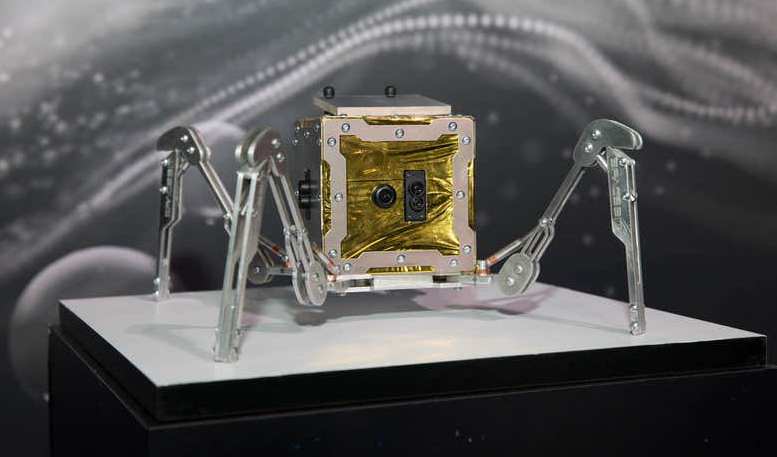After UK firm Spacebit announced a few weeks ago that it had signed a joint agreement with Astrobotic to begin commercial and scientific lunar exploration starting in 2021, the company has now revealed the design of its lander - a walking rover that looks like a small mechanical spider.
Developed by the London-based start-up company, Spacebit’s rover weighs just 1.3 kilogrammes, is solar powered and instead of wheels or tracks, is equipped with four arachnid-like legs so that it can crawl into holes, rather than traverse the ground like ‘traditional’ rovers.
Speaking at the New Scientist Live event in London's ExCeL yesterday, where Pavlo Tanasyuk, SpaceBit's founder made the announcement, the entrepreneur said that he hopes that future versions of the rover would be sent to explore tubular cave structures – subsurface tunnels, believed to have been formed by ancient balsatic lava flows – to see if they are viable locations in which to build future lunar habitats.
During the first mission however the rover is only scheduled to move 10 meters from Astrobotic’s Peregrine lander. It will be equipped with cameras – one of which can take a "robot selfie”, and the capability to take full HD video plus 3D LIDAR data to gather a range of data.
That data will then be sent back to Astrobotic’s lander before being transmitted to Earth. "Our goal is to go there and see what is available there for all humanity to explore," said Tanasyuk.
The rover is designed to last just one lunar day (10 Earth days) as it is unlikely the small spider-bot would be able to withstand the perishing night conditions on the lunar surface.
Although space missions are generally the reserve of large organisations and governmental space agencies, Astrobotic themselves were awarded $79.5 million by NASA to carry up to 14 of their instruments to the Moon, Tanasyuk has already said that he would like to “democratise access to space exploration,” by getting the general public involved more. Spacebit are therefore offering students the chance to get involved with their missions by helping the company to design one of the sensors housed on the rover.
However, before the walking robot can make its debut on the Moon – an achievement that just three countries, US, China and Russia, have attained so far, the Peregrine lander first has to touch down on the lunar surface successfully.
A tricky task that has thwarted many recent attempts from other nations, but Astrobotic remain undeterred. “It’s going to be quite a spectacle when we land because we’re going to have multiple small rovers dropping and rolling or crawling or walking off and taking all kinds of pictures and data,” says the company’s CEO John Thornton. The rovers will send their data back to the lander, which will transmit it back to Earth.
The UK are pushing hard on their space agenda and along with the walking rover, the country is also developing the "Rosalind Franklin" rover. This is being built by the British division of Airbus in Stevenage and is aiming for lift-off to Mars in July 2020.
If you would like to see what the spider-bot looks like up close, SpaceBit is displaying a life-sized model of the rover at the New Scientist show, which runs until 13 October, 2019.











